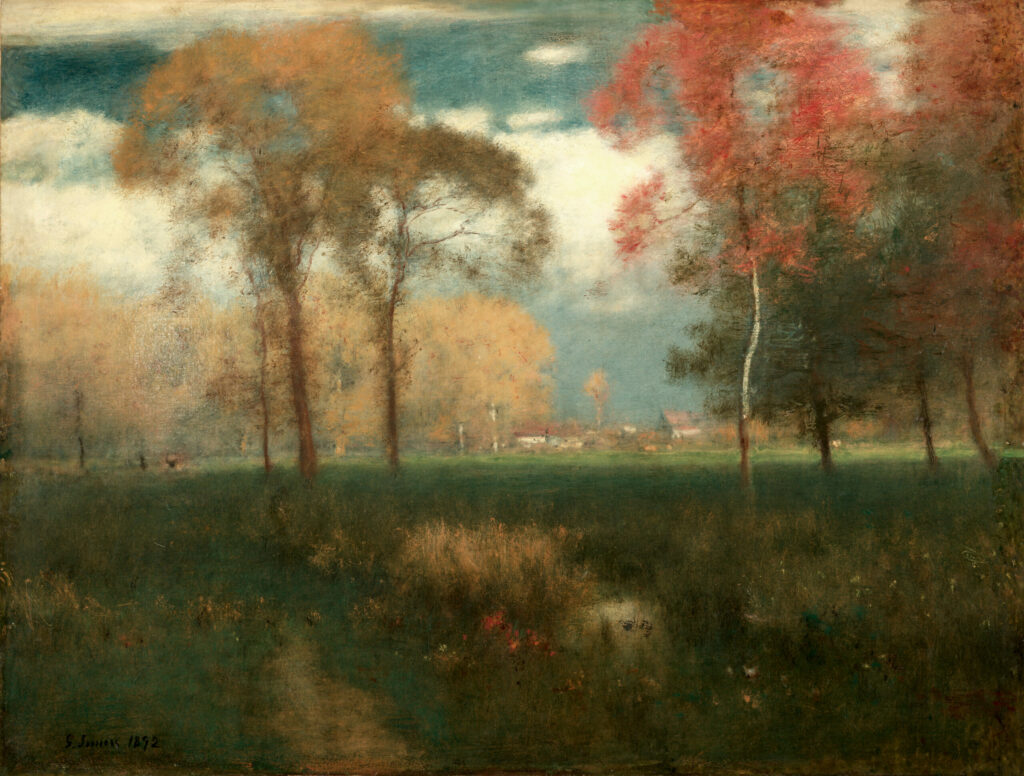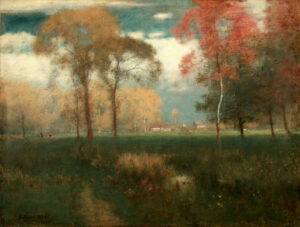
Cleveland, 1892. George Inness stands before his canvas. At 67, the American painter seeks to capture the invisible: the divine presence in nature. This will not be a simple autumn landscape. This will be a spiritual vision.
An Atmosphere Between Dream and Reality
Trees rise like ghostly silhouettes. Their foliage explodes in coral red, copper orange, and golden ochre. The sky alternates luminous turquoise and cream-white clouds. At the center, a village barely appears, drowned in autumnal vapor. Inness works in translucent layers. Oil is applied in successive veils that create this vaporous depth. Contours dissolve. Forms vibrate. The dark green meadow anchors the composition. Each element seems to float in an unreal light.
The Legacy of American Tonalism
This work perfectly illustrates Tonalism, an American artistic movement of the late 19th century. Inness was its pioneer. He rejects the descriptive realism of the Hudson River School to favor emotion and spirituality. Inness transforms each landscape into meditation. His blurred forms and atmospheric effects translate his mystical vision of nature. The landscape becomes divine apparition.
George Inness, an Unrecognized American Master
George Inness (1825-1894) ranks among the greatest American landscape painters. Self-taught, he studied briefly under Régis Gignoux before traveling to Europe. His style evolved from meticulous detail toward poetic abstraction. Prolific, he created more than 1,000 works over 50 years. This canvas, completed two years before his death, represents the culmination of his research.
Think about it
💭 What if this misty landscape were not a place, but a state of mind? What emotion do you feel facing this vaporous nature?
About this work
- A Sunny Autumn Day
- George Inness
- 1892
- Oil on canvas
- 81 × 106 cm
- The Cleveland Museum of Art
- https://www.clevelandart.org/art/1956.578






